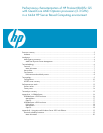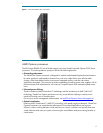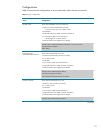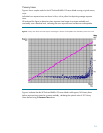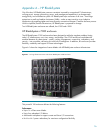
• Investment protection
By leveraging AMD’s Common Core Strategy and Same Socket Technology, Quad-Core Opteron
processors can minimize changes to the customer’s software and data center infrastructure,
protecting IT investments and simplifying management.
AMD Dual Dynamic Power Management
Dual Dynamic Power Management functionality allows each processor to maximize the power-saving
benefits of Enhanced AMD PowerNow! without compromising performance, reducing idle power
consumption and enabling per-processor power management in multi-socket systems to further reduce
power consumption.
By powering core and memory controller voltage planes independently, Dual Dynamic Power
Management can enhance both performance and power management.
Benefits include:
• Increased performance
The memory controller is able to run at a higher frequency, helping to reduce memory latency and
thus improving application performance.
• Improved power management
By operating independently from the memory controller, the cores in a Quad-Core Opteron
processor can exploit the power savings offered by Enhanced PowerNow! more often, resulting in
reduced power and cooling bills. In addition, the processor reduces power to the northbridge
2
when memory is not in use, while continuing to provide full power to the cores.
The following sections of this paper describe the testing performed by HP to characterize the
performance and scalability of an HP ProLiant BL685c G5 server blade in a 64-bit HP SBC
environment.
Note:
A 64-bit HP SBC environment eliminates the kernel memory constraints that
can limit server scalability in a 32-bit HP SBC environment. For more
information, refer to
Appendix B – Using Microsoft Windows Server 2003
x64 Editions.
2
Or memory controller hub (MCH)
5



